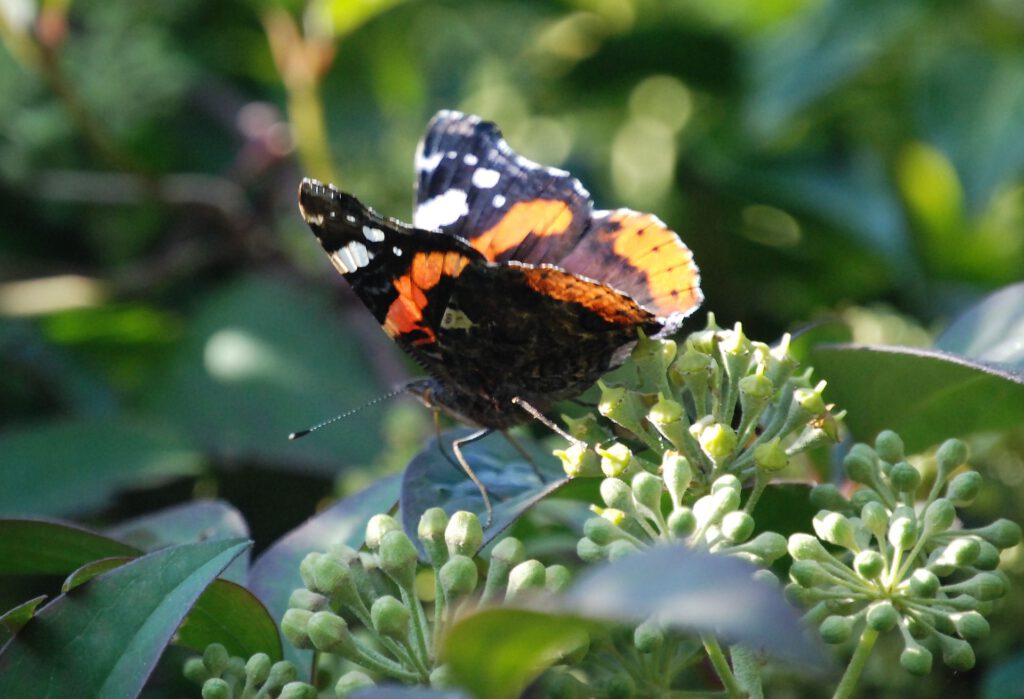How your parent’s garden can help butterflies make a come-back

This year we’re seeing a surge of ‘Painted Lady’ butterflies in parts of the UK. But it’s big news because butterflies are actually in decline. So when we’re helping our parents re-plan their gardens to be more manageable in later life, or start a new garden, why not invite the butterflies back with these tips?
Our parents may remember seeing a huge range of butterflies and moths in the garden when they were younger. But according to The State of the UK’s Butterflies Report, butterflies have declined by 76% since the 1940s, and records suggest moths have declined by 28% over the same period.
Not only are butterflies and moths good to look at, but they are excellent pollinators. Whereas bees get covered in pollen, butterflies take a smaller amount on their slender legs, but they travel greater distances than bees. This means they spread pollen over a larger area, strengthening the genetic variation of DNA in plants, which makes them tougher and less likely to fall prey to disease.
Butterflies and moths also provide food for our birds. Blue tit chicks in particular feast on caterpillars in spring, and the adult butterflies are a filling meal for both birds and bats. In fact without butterflies our native wildlife would go hungry as mating and breeding seasons are arranged around food sources.
If we want to build a garden that nudges the memory as well as the senses, and supports wildlife and plants, then there are various actions we can take to make the garden tempting to butterflies and moths.
Make a house a home
A butterfly house provides welcome shelter. Place the hotel in a south-facing sunny location because butterflies like warmth – their wings are adapted to soak up as much heat as possible. Ensure it remains dry inside by attaching a porch if yours doesn’t have this vital addition. Fix it to fence post or brick wall to avoid a tunnel of freezing wind. A butterfly house away from a wall or on a chain is little use.
Peacock butterflies and Tortoiseshells may hibernate in your butterfly house so don’t take the winter months as an opportunity to clean it out.
Plant for success
Plant for the benefit of butterflies and moths. Bees and butterflies need flowers to survive and in turn birds, bats and other mammals need bees and butterflies. But it’s not as simple as loading up your boot at the garden centre, because caterpillars need certain plants to thrive. Here are some good choices:
- Nettles
- Bird’s Foot Trefoil
- Nasturtium
- Garlic Mustard
- Ladies Smock
- Long Coarse Grasses
- Oak
- Elm
- Holly
- Ivy
You might not be keen on common nettles, but a patch in a sunny garden corner is invaluable. Limit their spread by growing nettles in a sunken container.
Adult butterflies and moths need nectar. Most native wildflowers and weeds are appreciated by our pollinators, but here are some good choices:
- Aubrietia
- Bluebell
- Clover
- Cuckooflower
- Daisy
- Dandelion
- Forget-Me-Not
- Pansy
- Primrose
- Wallflower
- Oregano
- Buddleia
- Lilac
- Sedum
- Michaelmas Daisy
- Asters
- French Marigold
- Knapweed
- Lavender
- Marjoram
- Red Valerian
- Scabious
- Thyme
- Verbena
- Flowering Ivy
Try to have as many suitable flowering plants as possible right through the seasons. Choose warm, sunny spots to plant your nectar-rich flowers and keep deadheading them so more blooms appear. This is especially important in spring and autumn when food sources are slim pickings.
Its good practice to buy genuine UK plants and wildflower seeds because exotic species are not always suitable food for butterflies.
Go wild
As well as growing more nectar-rich flowers, keep an area of garden wild. Leave it unmown, add bee and butterfly hotels, some native wildflower seeds, a hedgehog house, and some logs, and the wildlife will move in. The added benefit is that while a wild garden does require some management, it’s less work than a carefully manicured outdoor space.
Provide water
We have taps, but mammals, birds and insects don’t. In hot summer months wildlife dies from dehydration. A simple bowl of fresh water is so easy, yet saves countless lives. Butterflies drink water too and the best way to help is to fill a dish with marbles or pebbles and fill it daily. Bees and butterflies will sit safely in the pebbles with danger of falling in.
Stop using pesticides
Pesticides kill everything they land on and sprays are carried around on the wind. This means butterflies, moths, caterpillars, eggs and pupa are destroyed. Bees, ladybirds, hoverflies and all pollinating insects are wiped out. A sterile garden is a wildlife-free garden.
It won’t take long for natural aphid predators to arrive if you simply spray with citrus-soaked water or remove them by hand. Just wear gloves – it’s not that bad. Gardeners have managed for thousands of years without pesticides, so net your cabbages – don’t spray them.
Leave well alone
Don’t disturb a hibernating butterfly if you come across one. They do no harm, and releasing one that’s woken in the central heating means death if it’s cold outside. Instead, put it in a shoebox with a thin slot cut on one side. Then place it in a cold, dark place like your garage or shed to continue hibernating.
If you’d like to know more about inviting butterflies into the garden, you can find a longer version of this article on the DIY Garden blog.
You can read more about gardening by and with older parents:
With ‘no mow May’ firmly in the gardening calendar, find out more about wildflower friendly lawns
Image by Steve Bidmead from Pixabay

